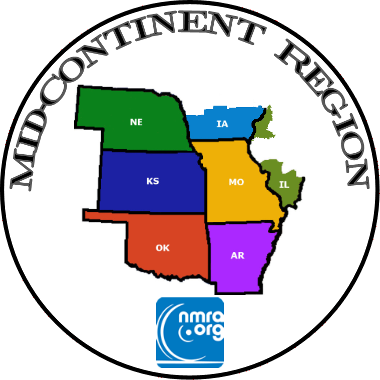Using JMRI for OperationsMark JuettOver the course of many years as many of us have become more interested in model railroad operations several methods of car forwarding have been developed. Some have used colored tabs or thumb tacks placed on the cars to indicate to where they should be switched. But someone had to decide the routing and tabs on rolling stock was not very prototypical looking. Others have used a card with several destinations listed in sequence. As they reached each destination a colored pen was used to check off the destination and the next session it would be forwarded to the next, and around and around the cars would go. Many have adopted the 4 cycle waybill system but there are many cards to keep organized and the car completes the cycle in four sessions and is back at the original location. Several people have written software programs and some have been made available commercially. It takes a very long time to write your own software and some of the commercial products are no longer supported. About a year ago I started using JMRI Operations software. I had been using JMRI Decoder Pro for quite a long time to set CVs in decoders and fine tune locos but had used little else in JMRI. A friend had been using the Operations portion of JMRI and I liked the way it worked at his Op Sessions. I started using it to keep records of my locos and rolling stock. In time I started to set up locations, towns and railroad customers. I set track lengths so then we knew the capacity of sidings at industries and yards. I learned to build trains and create switch list. Now cars are moved about the railroad and off line through interchanges and the same car doesn't show up at the same place in four cycles unless you want it to do that. The software is free, flexible, supported by a group of volunteers that support JMRI. Come join me and I will give you an overview with a power point presentation then I share with you what I have learned and show you just how easy it is to get started and how easy it is to use with a live demonstration. I'll show you how to add rolling stock and locos. How to create locations, add yards, sidings, staging and interchanges with foreign roads. Then we will set up routes and build trains. BioMark Juett has been involved in model railroading for over 50 years. Like most it started with a train set. His was a Lionel set at Christmas that grew each year. His older cousin Jimmy was a huge influence in Mark's model railroading.Much of the intrigue of model trains was the mechanical and electrical (and later electronic) control. This interest in things mechanical and electronic led to an Associate Degree in Electronic Engineering Technology, later a BS in Ag Engineering.Mark has years of experience in hand laying track, custom made switches and crossings and other specialized track that is not available readymade. He built one of the first command control systems from components when Keith Gutierrez introduced the CTC-16 in the late 1970's. Later Mark converted to DCC and writes the monthly column the Pulse of DCC in the NMRA Magazine. He also was an early adopter of Dr. Bruce Chubb's Computer Model Railroad Interface. He also has considerable experience in detailing locos and rolling stock, custom painting and weathering as well as scratch building of structures in styrene, wood, plaster and brass. Mark has reworked older locos for clients to make them run better and installed DCC decoders for others. After years in the corporate world and nearly a decade running his own restoration business his Friend Miles Hale gave him an opportunity to pursue one of his great passions as Miles and Fran were wanting to transition into retirement. Mark's company builds and maintains custom model railroads, does other custom model railroad work in addition to his construction business.Mark currently holds the following National Model Railroad Association Achievement Program certificates: Engineer Electrical, Engineer Civil, Model Railroad Author, Master Builder Scenery and Chief Dispatcher. He has about half of the work completed towards Master Builder Cars and Master Builder Structures. |



